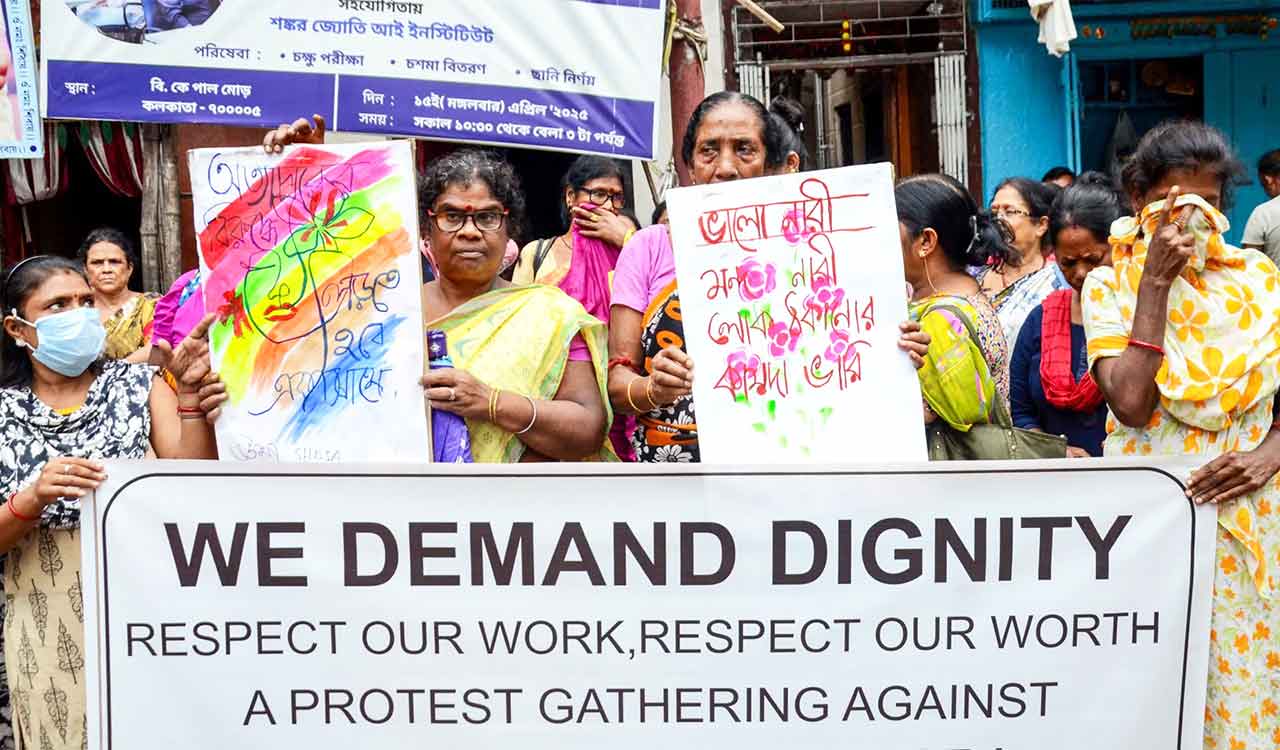Opinion: Beyond the Red Light — Survival, stigma and struggle of India’s sex workers
Community networks are changing the lives of sex workers, but challenges such as social prejudice and systemic neglect remain

By Saikat Sarkar, Shayan Das
Sex work in India exists at a complex intersection of legality, social norms, and economic survival. Kolkata and Mumbai — both cities, with their histories of migration and urbanisation, have developed large and well-established sex industries. The paradox places sex workers in a precarious position, operating within informal economies where legal protections are absent and exploitation is common.
Also Read
This article examines the economic survival strategies of sex workers in Kolkata and Mumbai, and investigates the role of unions in advocating for social justice and governance mechanisms that regulate this informal economy
Survival Strategies
Sex workers in Kolkata and Mumbai operate primarily within the informal economy, which lacks formal labour protections or regulatory oversight. The Durbar Mahila Samanwaya Committee (DMSC) in Kolkata is one of the most successful examples of collective organisations. Founded in 1995, the DMSC represents over 65,000 sex workers and works to secure economic rights, improve working conditions, and advocate for decriminalisation.
Reports indicate that DMSC members are engaged in manufacturing essential goods such as sanitisers and masks, primarily for their community of approximately 7,000 sex workers. Despite these efforts, the income generated from such activities is insufficient compared to their previous earnings from sex work, which could reach up to Rs 2.5 crore monthly before the pandemic.
In Mumbai, the SANGRAM organisation has similarly focused on improving the economic and social conditions of sex workers, advocating for their recognition as legitimate labourers entitled to rights and protections.
A 2018 study by the National AIDS Control Organization (NACO) found that unionised sex workers tend to earn higher wages and experience lower levels of violence than non-unionised workers. However, a comparative analysis reveals that female sex workers in India earn significantly less than their counterparts in other countries.
The Durbar Mahila Samanwaya Committee in Kolkata is one of the most successful examples of collective organisations, working to secure their economic rights, improve living conditions
For instance, while a female sex worker in Kolkata earns approximately ₨ 300 per encounter after adjusting for local cost of living, those in Thailand earn about ₨ 1,578, and those in the US earn up to ₨ 8,557. Moreover, the informal nature of their work continues to limit their access to formal financial services, healthcare, and social security. Economic precarity remains a persistent challenge without any policy reform for many sex workers in both cities.
Community Efforts
Unions such as the DMSC and SANGRAM have been instrumental in advocating for the rights of sex workers, shifting the discourse from criminality to labour rights. The DMSC in Kolkata has pioneered the use of self-regulatory boards, which monitor working conditions in Sonagachi and provide sex workers with protection from police harassment and client exploitation. This system has helped stabilise earnings and enabled workers to negotiate better wages and working conditions.
Moreover, DMSC’s community mobilisation efforts have led to improved health outcomes. ‘The Sonagachi Project’ (Sonagachi Project-India, 2004), operating under the DMSC, has established numerous STI/HIV clinics that provide comprehensive healthcare services to sex workers and their children. As of recent reports, there are 43 such clinics in West Bengal. The DMSC has even implemented literacy programmes for women who cannot read, further empowering them through education and skills development.
Similarly, SANGRAM’s approach includes community-led interventions that enhance financial security among female sex workers (FSWs). A longitudinal study involving over 2,000 FSWs demonstrated that community collectivisation significantly reduced financial vulnerability and increased self-efficacy among participants.
Health Disparities, Social Inequality
In addition to physical health issues, sex workers frequently experience mental health challenges. Research shows that depression is prevalent among this population, with rates as high as 60 per cent. Anxiety, substance misuse, and suicidal thoughts are also common. Numerous hazards associated with their work, such as assault and unsafe sexual practices, exacerbate those conditions. Yet, despite the high prevalence of mental health issues, sex workers face major obstacles in accessing healthcare support.
“People often see Kamathipura as a place full of immoral people engaged in indecent work, but for one individual, it was home and the safest place they knew,” says the child of a sex worker. Schools turn them away, and they face rejection when their background becomes known.
Despite their struggles, society continues to treat these women with disdain, enforcing a social stigma that dehumanises and isolates them. Ironically, in many Indian rituals, such as the making of the Goddess Durga idol during Durga Puja, a critical element involves ‘punya mati’ — sacred soil that must be collected from the doorstep of a sex worker. This custom, rooted in the belief that their blessings make the idol whole, stands in stark contrast to the way society marginalises them. Their contribution is honoured in secret, but their existence is condemned in public, revealing the complex layers of hypocrisy that sustain societal hierarchies.
Understanding and Inclusion
Sex work in India represents a complex intersection of economic survival, social justice, and governance. While unions like DMSC and SANGRAM have made significant strides in improving working conditions and advocating for labour rights, sex workers in both cities continue to face considerable challenges.
Continued support for unions and advocacy organisations is essential in shifting public perceptions and fostering a more just and equitable society for sex workers in India. After all, “Injustice anywhere is a threat to justice everywhere” – Martin Luther King Jr.

(The authors are independent researchers)
Related News
-
Hyderabad Cybercrime police arrest suspect in Rs 32 lakh online trading scam
7 mins ago -
Speaker rejects BRS petitions against defected MLAs; party to move Supreme Court
15 mins ago -
Delhi High Court refuses PIL seeking 4 times compensation for IndiGo flight cancellations
25 mins ago -
CM Chandrababu Naidu defends PPP model for new medical colleges in Andhra Pradesh
44 mins ago -
Andhra Pradesh: Hyderabad businessman donates Rs 1.2 crore worth of blades to TTD
59 mins ago -
NMC directs medical colleges to monitor doctors’ prescriptions
1 hour ago -
Tilak Varma jumps to fourth in ICC T20I rankings as Varun Chakravarthy stays on top
1 hour ago -
Self-styled YouTube reporter arrested for extortion in Hyderabad
1 hour ago




